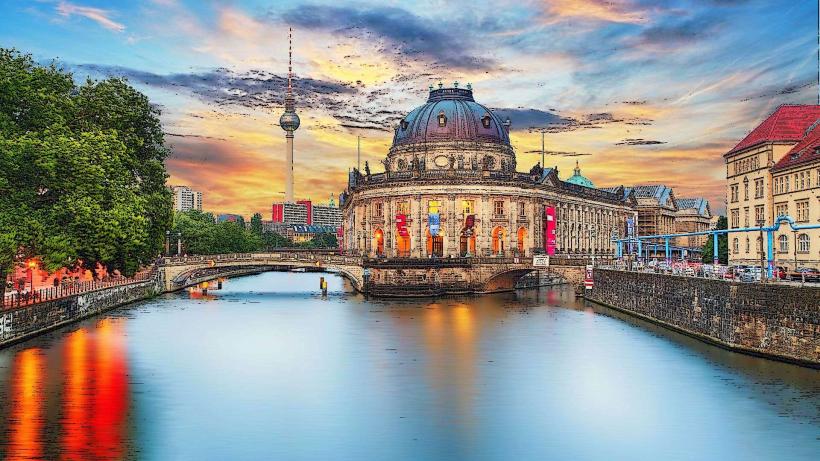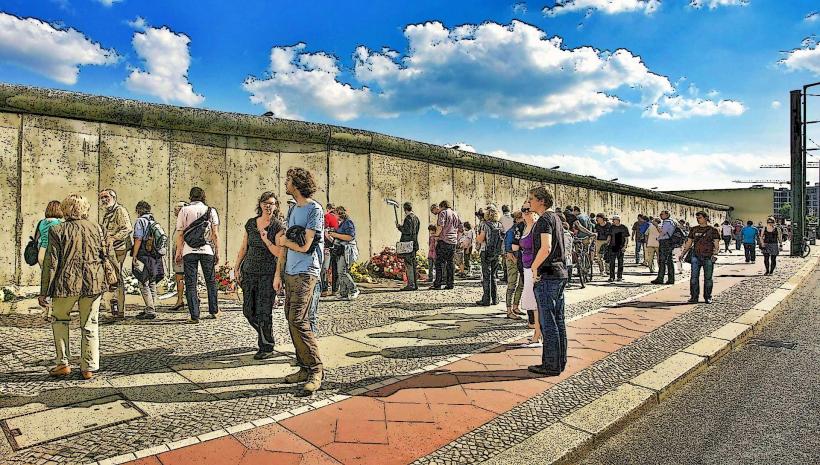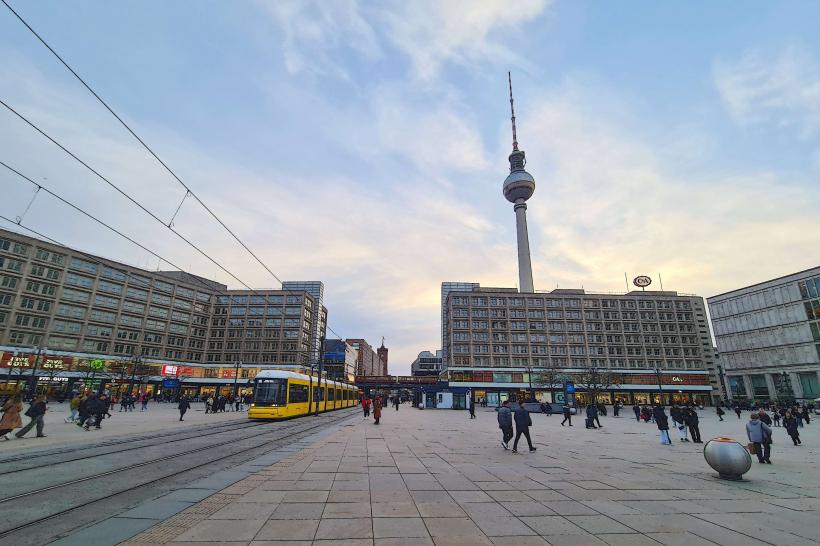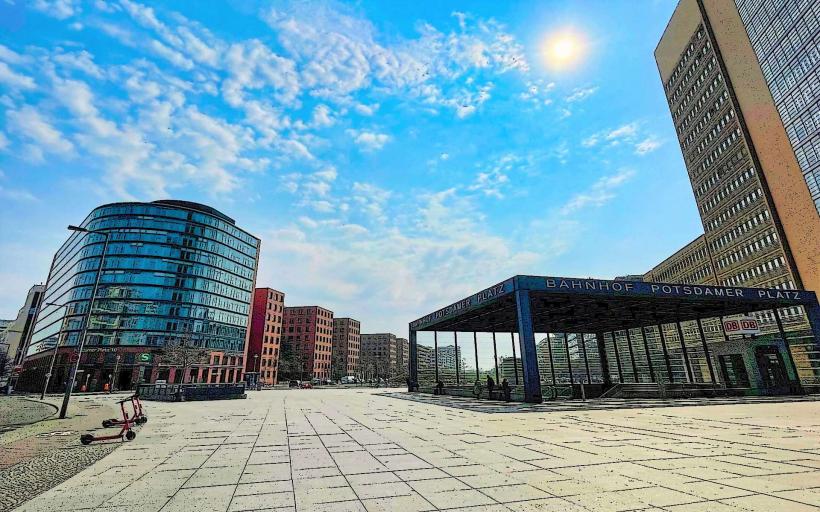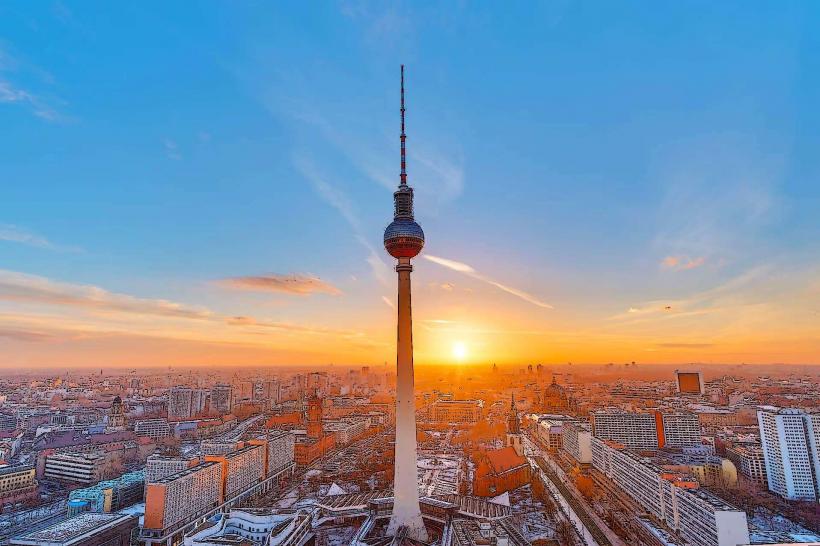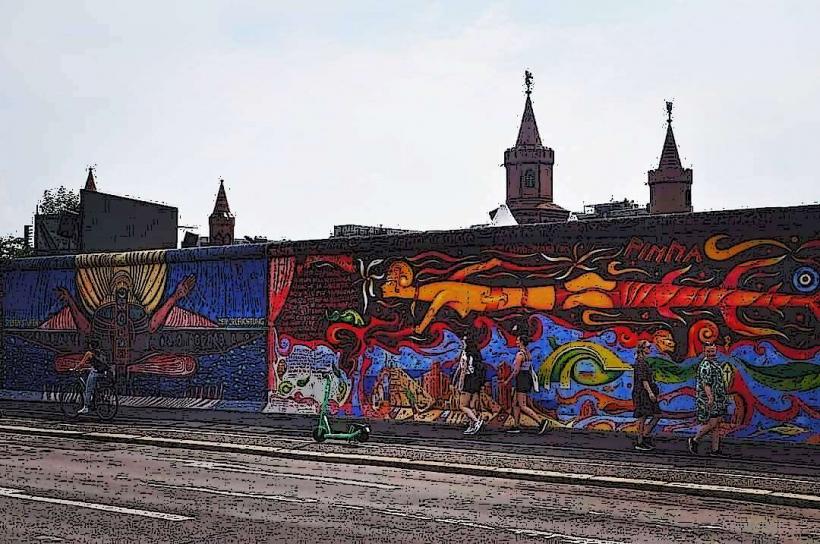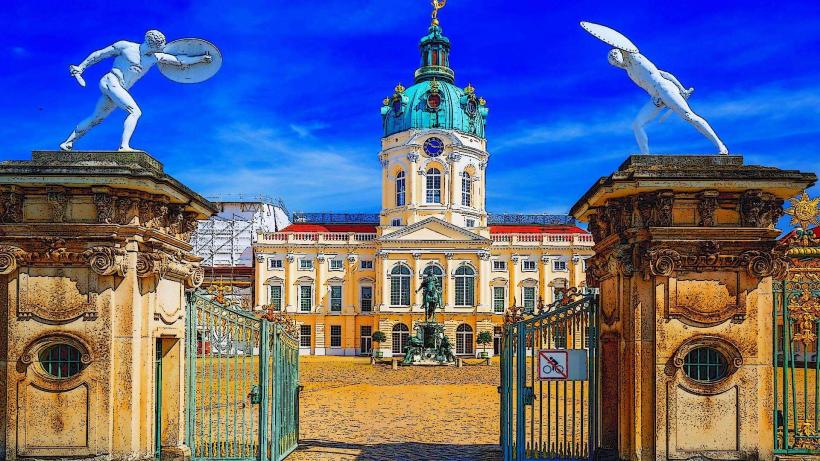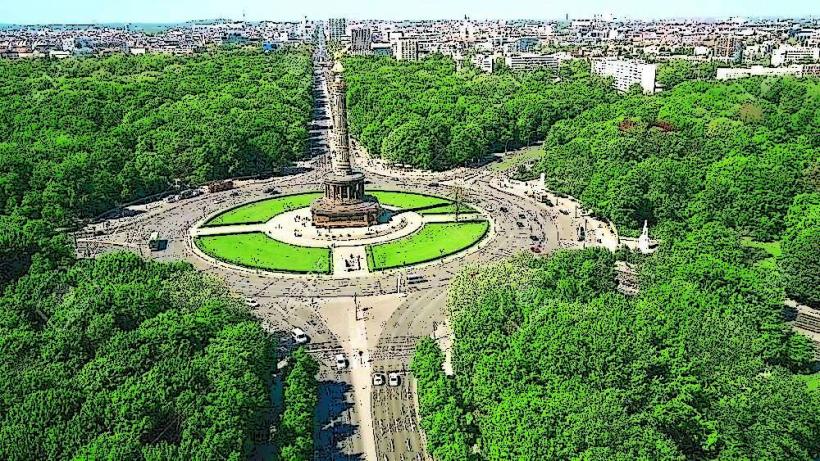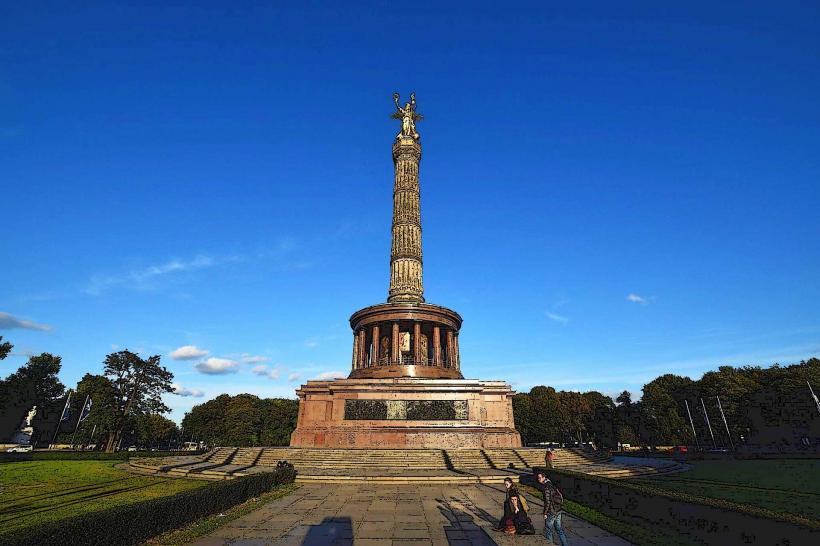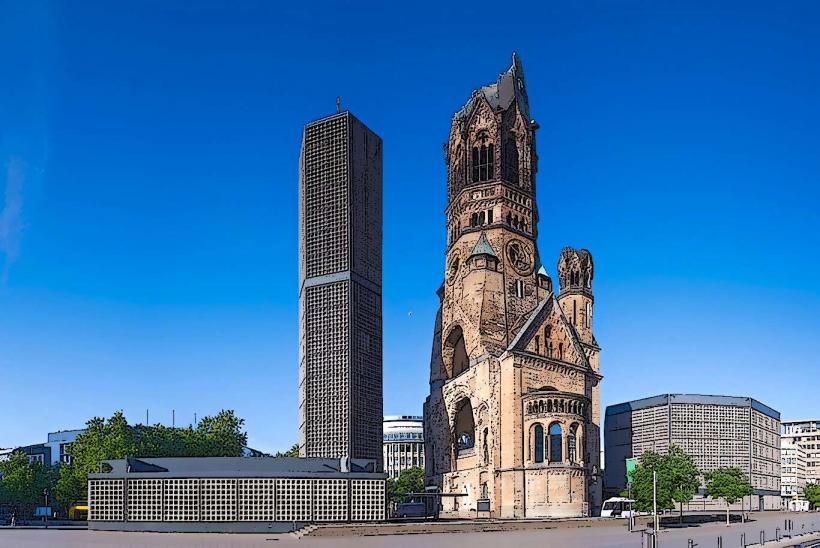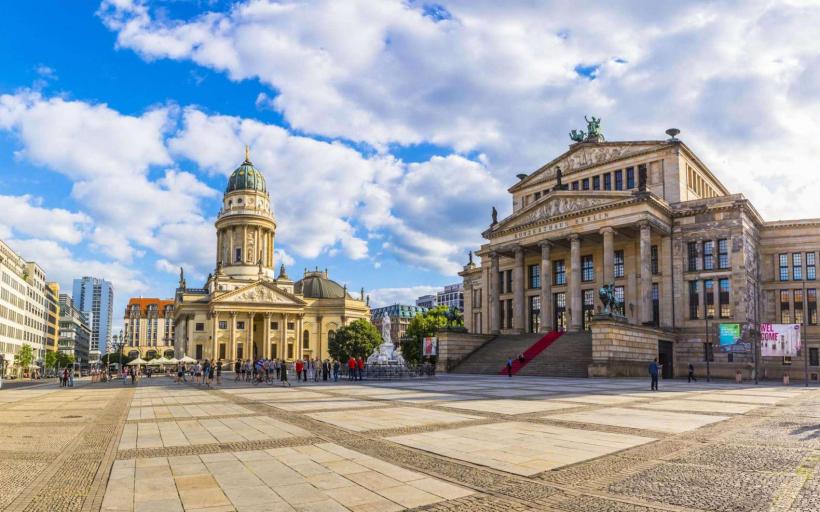Information
Landmark: Brandenburg GateCity: Berlin
Country: Germany
Continent: Europe
The Brandenburg Gate is one of Berlin's most iconic landmarks and a symbol of Germany's tumultuous history and its eventual reunification. Located at the western edge of Berlin’s city center, the gate has stood for over two centuries, witnessing major historical events and political changes in Germany.
1. Historical Background
- Construction and Neoclassical Architecture: The Brandenburg Gate was designed by Carl Gotthard Langhans in the neoclassical style and was completed in 1791. It was commissioned by King Frederick William II of Prussia to represent peace and as a grand entrance to the Unter den Linden boulevard leading to the Royal Palace. The gate was inspired by the Propylea (the gateway to the Acropolis in Athens) and was designed to evoke the ideals of classical antiquity.
- The Quadriga: Atop the Brandenburg Gate is the famous Quadriga, a chariot drawn by four horses and driven by the Roman goddess of victory, Victoria. The Quadriga was originally sculpted by Johann Gottfried Schadow and symbolizes victory and peace. It was taken by Napoleon after his conquest of Berlin in 1806 but was returned in 1814 after his defeat, when it became a symbol of Prussian triumph.
- Symbol of Division During the Cold War: The Brandenburg Gate became a symbol of division during the Cold War. Following World War II, Berlin was divided into East and West, and the gate stood at the border between East and West Berlin, directly next to the Berlin Wall. It was closed off in 1961 when the Berlin Wall was erected, effectively isolating the gate from both sides of the city.
- Reunification: In 1989, the fall of the Berlin Wall symbolized the end of the division of Germany, and the Brandenburg Gate became a powerful symbol of reunification. When the wall came down, the gate, once a symbol of separation, became a symbol of hope and unity for the people of Berlin and Germany. The celebrations that followed the fall of the Wall included large crowds gathering at the Brandenburg Gate, marking its transformation into a symbol of freedom and unity.
2. Architecture and Design
- Neoclassical Style: The Brandenburg Gate is a prime example of neoclassical architecture, featuring twelve massive Doric columns, six on each side, forming five passageways. The central archway was once used by kings and dignitaries to enter the city.
- Dimensions: The gate stands 26 meters (85 feet) tall and 65.5 meters (215 feet) wide. Its grandeur is amplified by the six columns on each side, creating a symmetrical and imposing presence. The columns are made of sandstone, and the gate’s design reflects the classical ideals of strength, unity, and order.
- The Quadriga: The Quadriga, which rests above the gate, is an important artistic feature of the structure. It was designed by Johann Gottfried Schadow in 1793 and represents the goddess Victoria driving a chariot pulled by four horses. Originally, the goddess was depicted as driving towards the city, symbolizing victory. Today, it is a powerful representation of unity and triumph.
3. Location and Surroundings
- Unter den Linden Boulevard: The Brandenburg Gate stands at the western end of Unter den Linden, one of Berlin’s most famous boulevards. This wide, tree-lined avenue leads to several key cultural and historic sites, including the Berlin State Opera, Berlin Cathedral, and Museum Island.
- Pariser Platz: The Brandenburg Gate is situated at Pariser Platz, a large square that faces the gate on the western side. Pariser Platz is one of Berlin’s most important landmarks, surrounded by historic buildings and home to the Hotel Adlon (one of the most famous hotels in Berlin). The square is also a hub for political and social events.
- Reichstag Building: Just a short walk away, the Reichstag Building (German parliament) sits to the north of the Brandenburg Gate. The Reichstag is another key symbol of Germany's democratic history and its reunification, as it was where Germany's first unified parliament met in the 19th century and later became the site of symbolic reunification celebrations in 1990.
4. Brandenburg Gate Today
- A Symbol of Unity and Freedom: Today, the Brandenburg Gate stands as a symbol of German unity, freedom, and democracy. It is frequently used for political and cultural events, including celebrations, protests, and official ceremonies. The gate is also a popular tourist attraction, drawing millions of visitors from around the world each year.
- Light Shows and Art Installations: The Brandenburg Gate is often used as a canvas for light shows and art installations. It frequently hosts special events, particularly during festivals such as the Berlin Festival of Lights and New Year’s Eve celebrations. During these events, the gate is illuminated with vibrant light displays and projections.
- Tourist Attraction: The Brandenburg Gate is one of Berlin’s most visited tourist sites. Visitors can enjoy its architectural grandeur, take photos, and learn about its history through information panels and nearby museums. The area around the gate has also been transformed into a vibrant urban space, with cafes, restaurants, and shops.
5. Nearby Attractions
- Berlin Wall Memorial and East Side Gallery: The Berlin Wall Memorial, located nearby, offers a powerful reminder of the city’s division during the Cold War. The East Side Gallery, a stretch of the Berlin Wall covered in murals and graffiti, provides a visually striking history of the wall’s impact.
- Tiergarten Park: To the west of the Brandenburg Gate is the Tiergarten, a large public park that serves as a green oasis in the middle of the city. The park is perfect for walks, picnics, and relaxing amidst the natural beauty of the area.
- Victory Column (Siegessäule): Located nearby, the Victory Column is another significant monument in Berlin, celebrating Prussia's military victories. The column stands in the Großer Stern (Great Star) traffic circle and offers a panoramic view of the city from its observation deck.
6. Conclusion
The Brandenburg Gate is more than just an architectural landmark in Berlin; it is a symbol of the city’s resilience, its struggles during the Cold War, and its ultimate triumph in reunification. Standing tall at the heart of Berlin, it continues to serve as a cultural and political symbol, representing the unity and freedom of the German people. Whether viewed as a historical monument, a place for celebration, or a symbol of hope, the Brandenburg Gate remains an enduring icon of Berlin and Germany’s rich, complex history.



